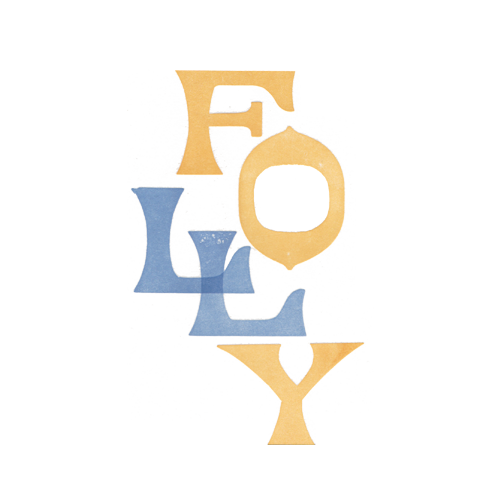In the grounds of Benington Lordship, an early 18th century mansion near Stevenage in Hertfordshire, is a sham ruin on a grand scale. Constructed in the 1830s it combined the roles of eye-catcher, gateway, smoking room and banqueting hall in one rambling structure.
Banqueting House
The Temple, Crow Nest Park, Dewsbury
When first built the handsome gazebo in the grounds of Crow Nest in Dewsbury would have had views over the estate’s fine gardens and pleasure grounds. At the end of the 19th century Crow Nest was bought for the people of Dewsbury, and has now been a public park for 130 years. The Temple remains an ornament to the park, but sadly today it has a rather forlorn appearance.
The Wedding Cake, Waddesdon Manor, Buckinghamshire
The Folly Flâneuse celebrated her birthday this week, and what better way to mark the occasion than with an enormous cake? Although sadly, this one is not edible. As many of the buildings featured in these pages are gone, it was a real birthday treat to see this new folly, recently constructed to ornament the Waddesdon landscape.
May Daze
The Flâneuse is travelling far and wide this month in search of follies, and the results of her research will appear here very soon. Until she gets home, and gathers her thoughts, here are the highlights of a very recent day in the Cotswolds with members of the Folly Fellowship.
Haughmond Castle, Uffington, Shropshire
Sundorne House in Shropshire was the seat of the Corbet family and the estate included the picturesque ruin of Haughmond Abbey. In 1774 John Corbet added a dramatic eye-catcher to the ensemble – a sham castle on the summit of Haughmond Hill.
The Summerhouse, North Seaton Hall, Northumberland
North Seaton Hall stood in the hamlet of the same name, just inland from Newbiggin by the Sea on the Northumberland coast. The house and ancillary buildings were demolished in the 1960s, and the land developed for housing: only the road called ‘Summerhouse Lane’ gives a clue to a fascinating feature which once ornamented the grounds.
Curiouser & Curiouser: a Folly in Frome, Somerset
Tucked in the corner of a garden in the town of Frome, Somerset, stands a little tower with a conical roof topped with a pineapple. This flamboyant finial, like the rest of the folly, is the work of the talented and resourceful Nigel Day: the uppermost leaves started life as a copper hot water cylinder.
A Musical Interlude
The Folly Flâneuse is away (in search of follies of course), so until next week here is a brief look at the very pretty Music Temple at West Wycombe in Buckinghamshire, the seat of the Dashwood family.

The temple, also known as the Theatre, was designed by Nicholas Revett in the late 1770s, and sits on the largest of the three islands on the lake. Sir Francis Dashwood’s guests would have been rowed over to the island for fêtes champêtres of food, wine and music.

The Music Temple is just one of the many garden features added to the West Wycombe landscape in the eighteenth century. Some are lost, but others have been restored, or indeed rebuilt, by later generations of the family.

In 1943 Sir John Dashwood gifted West Wycombe to the National Trust, but the house remains home to the Dashwood family. The house and grounds reopen in the spring https://www.nationaltrust.org.uk/west-wycombe-park-village-and-hill

There will be no lounging around for the Folly Flâneuse, who will be back next week.
APOLOGIES that there has been a glitch in the system and regular readers will receive two posts this week. If you have missed the other it is here https://thefollyflaneuse.com/bonds-folly-or-creech-grange-arch-dorset/
Lady Amabel and Landscape Ornament at The Grove, Hertfordshire
Lady Amabel Yorke was the elder daughter of Philip Yorke, 2nd Earl of Hardwicke, and his wife Jemima Campbell, 2nd Marchioness Grey, 4th Baroness Lucas. Their family seats were Wrest Park, Bedfordshire, and Wimpole Hall, Cambridgeshire, both of which had parks that were remodelled by Capability Brown with Amabel being privy to the design decisions. She was, then, rather well-informed on matters of landscape gardening, and her 37 volumes of diaries contain countless accounts of visits to the seats of her friends and family, where she sometimes notes follies and garden ornaments.
The Tong Knoll Monument & Tower, Shropshire.
On high ground in Weston Park, ancestral seat of the earls of Bradford, stands this prospect tower. Although Weston Park is in Staffordshire, the knoll on which the tower stands is just over the border into Shropshire, and it was formerly home to another monument, allegedly built for the most repulsive of reasons.










